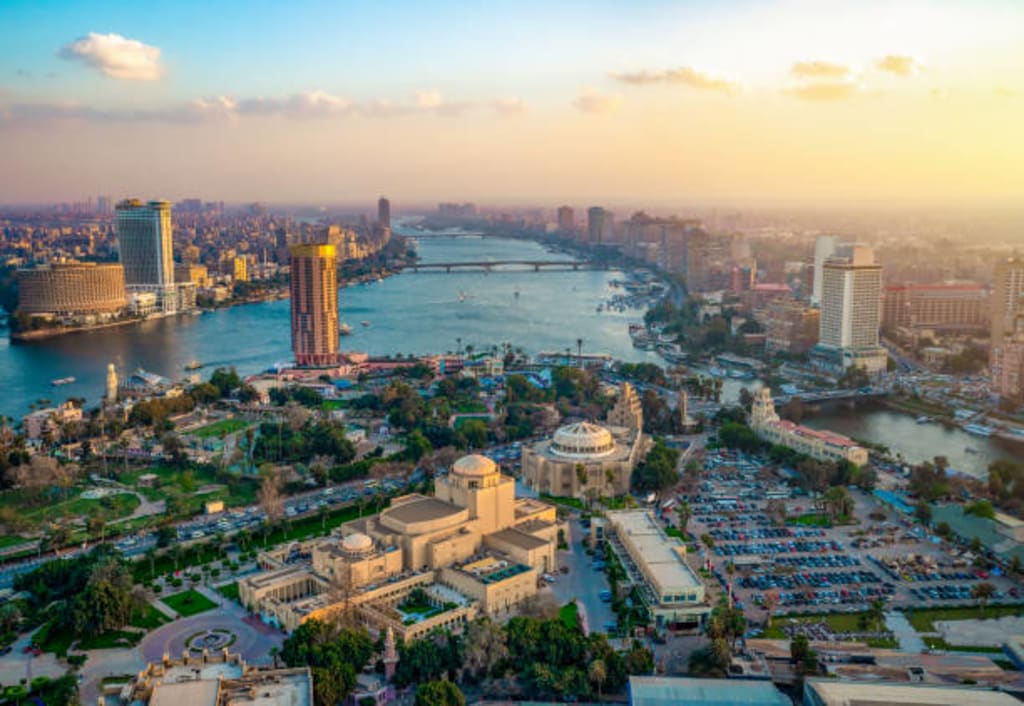Unveiling the True Motive Behind Egypt's Capital Relocation
Decoding Egypt's Bold Move: Why Shifting Capitals Sparks Curiosity and Reshapes the Nation's Future Vision! A must-read insight

Welcome to Cairo, the bustling heart of Egypt, a city of historical significance and vibrant energy. For generations, it has stood as a testament to the legacy of Egyptian rulers, their grand palaces, and the center of political power. The iconic Parliament building has echoed with debates and decisions for over a century and a half. This very public square has witnessed the ebb and flow of revolutions that have shaped the nation's destiny.
But a change is on the horizon. In 2015, a bold announcement reverberated across the nation: the Egyptian government declared its intention to shift its capital, a move of about 50 kilometers away from Cairo. The stage for this transformation? A seemingly barren expanse of desert that is rapidly evolving into the New Administrative Capital of Egypt. Picture this: a brand-new presidential palace set to rise, a contemporary Parliament building poised to host discussions, and a fresh public square that will invite gatherings and dialogues.
President Abdel Fattah El-Sisi, at the helm of Egypt's leadership, has put forth a compelling narrative: this new city holds the key to tackling Cairo's most pressing challenge – its swelling population. The numbers are staggering; Egypt is home to a staggering 100 million people, with nearly a fifth of them residing within the boundaries of Greater Cairo. At its zenith, the city's population density surged to 153,000 individuals per square kilometer, outstripping the likes of New York, London, and Shanghai.
The tale of Cairo traces back to the 10th century when it was officially established on the banks of the Nile, crowned as the capital of the Arab Fatimid Caliphate. A decision dictated by necessity, as the surrounding landscape was dominated by arid desert. Through the passing centuries, each ruler extended the city toward the fertile riverbanks, with Ottoman influences adding their distinct mark and the British contributing their own suburban layers during their prolonged occupation.
The mid-20th century ushered in a new era as Egypt embraced republicanism, and Cairo emerged as the unrivaled giant on the urban landscape. The decades of the 1950s, 60s, and 70s witnessed an influx of millions of hopeful souls from the countryside, drawn to the city's promise of opportunities and a better life. However, the city's organic growth along the river's edge had its limits, leading to the emergence of makeshift settlements that sprawled into informal neighborhoods. As these urban tendrils reached out, the once agricultural patches gave way to a sea of makeshift dwellings.
These informal neighborhoods, a testament to resourcefulness, emerged as vibrant enclaves, housing 60% of Cairo's population today. Their evolution is noteworthy, with many shifting from humble origins to embrace a middle-class identity. Yet, these areas bear the weight of crowding, a direct result of decades of policy inertia, inadequate investment in public services, and a dearth of affordable housing. The headlines echoed the crisis: "Egypt's Capital Struggles to Cope with Overflowing Population," "Cairo: A City Bursting at the Seams," "Housing Desperation in the Heart of Cairo."
In the heart of this complex narrative, President El-Sisi's vision for a new capital emerges. It is crucial to examine the motivations that propel this grand endeavor. The specter of the 2011 uprising looms large, when widespread protests demanding change engulfed Egypt. The heart of the unrest was Cairo, specifically the iconic Tahrir Square, a symbol of popular power and resistance for generations. It was here that the people's voices resonated, reverberating within earshot of government institutions, including the Parliament.
Fast forward to the present, and a clearer picture emerges. Sisi's ascent to power, accompanied by a crackdown on dissent and a focus on security, aimed to prevent any further upheavals that could challenge his rule. The revamping of Cairo itself is emblematic of this intention: roads widened, bridges constructed, and Tahrir Square revamped with towering monuments and private security. The grand finale, however, is the creation of an entirely new capital.
The New Administrative Capital, with its state-of-the-art government buildings and modern infrastructure, is poised to be a fortress of power, nearly 50 kilometers removed from the pulse of Cairo. While touted as a solution to overpopulation, it is equally a strategic move to distance the government from the masses. This vast expanse, anchored by the military's imposing presence, presents an insurmountable obstacle for protestors attempting to reclaim Tahrir Square's legacy.
In the grand tapestry of Egypt's history, the threads of tradition, political dynamics, and social aspirations are woven together to form a complex narrative. Cairo's story is one of resilience, growth, and challenge, encapsulating the dreams and struggles of its inhabitants. As the New Administrative Capital takes shape, it represents not only an architectural feat but a manifestation of power dynamics in a rapidly changing world. The decisions made within its walls will echo through the annals of Egypt's history, shaping its path forward.
In conclusion, the shifting sands of Cairo's fate have given rise to a new chapter in Egypt's story. The transition from the banks of the Nile to the open desert represents more than just a logistical move; it symbolizes the ebb and flow of power, the evolution of urban landscapes, and the intricate dance between rulers and the ruled. As the New Administrative Capital emerges, its towering structures are a testament to progress and ambition. Yet, beneath the surface, one cannot ignore the layers of history, the aspirations of the people, and the motivations that have sculpted this monumental shift. As Cairo's skyline transforms and a new horizon beckons, the question lingers: what does the future hold for a city that has long been the heartbeat of Egypt?
Like what you read? Consider liking and subscribing for more! :)






Comments
There are no comments for this story
Be the first to respond and start the conversation.